More Osaka
Wed 14 Sep 2011 by mskala Tags used: travelI am starting this draft in the Osaka train station, though I'll probably be well on my way to Kanazawa by the time I finish it. Sorry about the delay in posting - I've been too busy having adventures to write about them. I think last update I had made it as far as Abeno Seimei Jinja.
Monday morning I slept in a bit, and got off to a slow start. My plan for the day was to go a few train stops north, to Ikeda, and visit "The Momofuku Ando Instant Ramen Museum," followed by possibly (if time allowed) a trip south to Sumiyoshi Taisha. Going to Ikeda meant travelling on the Hankyu Rail Takarazuka Line, which is a private (non-JR) line on which my rail pass is no good. Thus, I had to buy a ticket (260円 one way) from the machine. I looked confused enough at the bank of ticket machines that a uniformed Hankyu Rail employee came up to offer me help, but since I didn't even understand her opening line, I figured I was better off taking my chances with the robots, and waved her off. It really wasn't very complicated once I decided to just ignore the on-screen prompts I didn't understand.
I got lost in Ikeda on foot, and ended up in a konbini (convenience store) where I mispronounced chizu ("map") badly enough that the clerk thought I was asking for chiizu ("cheese"), but once we got past that, she handed me off to a manager who still couldn't speak English but could speak Really Simple Japanese, and I was pleased to find that I really was able to communicate with him and get directions I understood to the Instant Ramen Museum.
The Instant Ramen Museum really wasn't set up for non-Japanese tourists. They had an English-language brochure, but the exhibits were all in Japanese and a little bit past my reading level. I think I enjoyed the adventure aspect of dealing with the train system, finding my way in Ikeda, and so on, more than the museum itself. They had a couple of interactive educational activities in which you could Make Your Own Instant Ramen, but I didn't partake. I did try a cup of curry udon in the tasting room.
As well as the history of instant ramen, the museum also exists to make a big deal of Mr. Momofuku Ando, an otherwise-unremarkable salaryman who invented instant ramen. He died just a few years ago. They had a couple of glass cases showing the medals he'd been awarded by various government agenecies for being the inventor of instant ramen, as well as a display of miscellaneous artifacts from his life (such as his glasses, his iPod, and so on), and a bronze statue in front. Mark my words, in a century or two, or maybe even just a decade or two, they'll promote him from inventor to kami, the god of instant ramen, and they'll put up some torii and it'll be Momofuku Ando Jinja. Oracles 200円, but you have to add hot water and wait three minutes. This is not exactly a joke.
After I got back from Ikeda, I figured I did have time to visit Sumiyoshi Taisha, so I took the tram southward again, to the Sumiyoshi stop. If I'd been planning more carefully, I maybe could have combined that trip with my earlier visit to Abeno Seimai Jinja, since they are both on the same tram line, but whatever. Sumiyoshi Taisha is a "grand shrine," one of the more touristy type, and it has a lot of large and small shrines sharing the same space. I found it rather confusing - never sure exactly whom I was supposed to worship where, nor whether I really wanted to make a small donation at every sub-shrine, or just one big one in one place, or what. They'll 100円 you to death at these places if you're not careful.
Sumiyoshi Taisha is noted for its big red almost-semicircular bridge (visible in several of my photos). I think the idea is that if you climb over the bridge you are cleansed of your sins, and the bridge is steep to symbolize that that's difficult.
There are four major kami enshrined at Sumiyoshi, and although not the foremost of them in the official ranking, probably the most interesting for my readers is the deified spirit of 3rd-Century Empress Jingu. Prior to the Meiji Restoration in the mid-19th Century she was counted as the 15th Emperor of Japan (I'm going to use that term regardless of gender - the equivalent Japanese word is not gender-specific anyway - in order to distinguish from the kind of Empress who is just a woman married to the Emperor), but during the Restoration they re-examined the records and decided that she shouldn't be counted as having held the top rank and was instead the Regent for an underage male relative. Also, Empress Jingu is considered "legendary," which means that there's a good chance someone at least sort of like her really existed, but it's not clear that her story is entirely factual.
Eight other women remain on the official list of past Emperors. The current rules of succession do not allow more to be added in the future - now only males are allowed to inherit the throne - but those rules were imposed by the American occupying force following World War II, and so they don't really have much weight of tradition behind them. A big part of the reason for the current rules was to limit the number of persons who could claim to be officially members of the Imperial Family, because of a desire post-war to limit the power of that family. Historically, there were no exact rules for who was Imperial and who could be Emperor (though it was partially formalized during the Restoration), and so a lot of ad hoc and informal things happened when necessary. This kind of flexibility is part of why the Japanese Imperial dynasty has been able to survive so long.
Around the turn of the 21st Century there was some concern because the list of potential future Emperors was down to just six men, all of somewhat advanced years and married to women also of somewhat advanced years, and the list could only be added to if one of them fathered a new son legitimately (i.e. with a woman he was married to at the time), which seemed like a difficult proposition, and there was some serious talk of trying to amend the rules, either just for this once or as a permanent thing, with such options discussed as adoption, permitting one of the men on the list to father an officially-recognized child with a younger woman he wasn't married to, or to marry a second wife (any of which would have solid historical precedents, but would be unpopular by current social norms). Then Princess Aiko was born in 2001 - who would be eligible except for being female - and there was serious talk of by one amendment or another adding her to the list of potential future Emperors. But the birth in 2006 of Prince Hisahito, who is eligible by the un-amended rules, caused that discussion to die down at least for the moment.
Monday evening I wandered a bit around the neighbourhood of my hotel, getting lost and then found again. I had katsu curry at Ebisu Curry, but it wasn't very good. I think my favourite curry so far was the Indo Club Curry at the Tennouji JR Station; though the CoCoIchi Curry in Nara was quite good too, especially for a fast-food chain.
Tuesday was the day I planned to meet one of my former tutors from the TIJ language school in Toronto. In the morning, on my own, I visited a couple more shrines. First, Nanbayasaka Jinja, which enshrines the local protective kami of the Nanba neighbourhood. This shrine is very photogenic because (although this is not the main shrine building) it has a building shaped like a Chinese lion's head with a sanctuary inside its mouth. It also had an even more informal approach to commercialization than I've seen at others - they didn't bother with shrine maidens and a souvenir shop, the oracles and charms and so on were just in bins with a price card next to them and you could put your money in the box and take one. I bought a fortune (omikuji) and was a little surprised to find it was printed in both Japanese and English, since until I opened the package and read it, I had seen no hint of any language other than Japanese. My fortune was "fairly good luck," including such highlights as "markets will definitely go down," and "do be in love with her," but "don't try your hand at a marriage proposal - it will be broken."
Exiting Nanbayasaka Jinja, I had thought to wander toward the river, where I thought there was likely to be some kind of parkland, but I misinterpreted the direction of the Sun and ended up going in the opposite direction and stumbled upon an Ebisu shrine (I think that's who it was) I hadn't been expecting. That provided enough of a hint that I was able to orient my map properly, and it was of some interest in its own right. The shrine search engine says "shiki tsu matsu yuki miya," but I'm not sure exactly what that means. Anyway, it had some nifty statues of someone I think was probably Ebisu, and rats as guardians, which I haven't seen before.
ETA: after doing some more research I now think it was probably a shrine for Daikokuten, not Ebisu. Especially inasmuch as it was in a neighbourhood called Daikoku, and even my limited kanji skills are good enough to recognize the characters 「大国」 on the signage. However, according to the Wikipedia article on the Seven Lucky Gods, "Ebisu and Daikokuten are often paired."
Finally before going to meet Yuya at noon, I climbed to the top of the "Parks" section of the Nanba Parks shopping mall, where I found the "Nankai Hawks Memorial Gallery," which displayed artifacts of the Nankai Hawks baseball team. I was a little worried by the name "Memorial Gallery" - like, was it going to turn out that the last display would be all about the tragic plane crash in which the Hawks all died? - but it turns out all that happened to the Hawks is they were sold to a different corporate sponsor and moved to Fukuoka.
I made it back to the hotel and waiting in front until it was clear my appointment at noon wasn't going to be kept on time, then I went into the lobby and tried unsuccessfully to get the wireless to work. I am at the point of wondering if something at MCFG+2 semi-permanently screwed up my wireless configuration, because I have not had it work anywhere since it stopped working on the second day of that workshop. Eventually I gave up, went back to my hotel room to use the non-wireless network, and received a message from Yuya saying he wanted to change the time of our meeting to 12:40. I got this at 12:39. So I rushed back to the sidewalk in front of the hotel, and met him.
We went to Imamiya Ebisu Jinja, which was on my priority list. This is a shrine of Ebisu, whom I've mentioned before. He was born boneless (that site I linked to a while back used the phrase "hideous deformed leech-baby") because his mother spoke first to his father during their marriage ceremony, a fact which long-time readers of this Web log should recognize as significant to me. After being set adrift in a reed boat and eventually washing ashore in Hokkaido, he eventually grew bones and became a protective deity of fishermen, and the disabled, and someone people pray to for success in business. He's also worshipped in "the month of no gods" when the other kami go to their yearly convention, because he doesn't hear the summons. He's usually depicted as a fat, jolly man, is much beloved in Osaka even though I'm not sure there's any particular legendary connection between him and the city, and there is a brand of beer named "Yebisu" (archaic spelling) in his honour.
After that we spent some time exploring the shopping area. Yuya showed me a district that is basically Osaka's answer to Akihabara in Tokyo; I'd already declared that I didn't really want to buy a lot of otaku goods in Osaka because I'd have to carry my purchases with me for the rest of the trip, but he said we could do "research," so that was what we did. See photos, and maybe comments I'll post in the photo section later.
We also sampled a bunch of food and drink specialties, and went up the Tsutenkaku Tower, at the top of which is a shrine for Billiken. Billiken is a grinning Kewpie-like character, described on the English-language signs as "the god of things as they ought to be." Apparently, things as they ought to be include a roaring business in trashy souvenirs, because the tower includes multiple floors of rack upon rack of Billiken charms, Billiken cookies, Billiken capsule-toy vending machines, "have your picture taken with Billiken" franchises, and so on, laid out so that once you reach the top you must walk past every single one of them before you can leave. It was the most commercial Shinto shrine I've seen to date.
Yuya insisted that I must (「なければならない」, literally "if you don't do it, that is not good") experience the Osaka nightlife, in the shape of what is called a "girl bar." He made the reasonable argument that this was an aspect of Japanese culture I'd be very unlikely to experience if left to my own devices. At this type of bar, the drinks are free - you pay by the hour instead - and you get to talk to young women bartenders who are wearing whatever costume you like. (I think if you say "school uniform," they say, "Which school; what grade level; the Summer or Winter uniform; specify cup size; with or without glasses; and tsuntsun, deredere, or tsundere?" But I didn't try that.)
If you've seen Lucky Star, you can note that a "girl bar" is basically the same thing as the "cosplay cafe" where Konata works, except the "girl bar" operates at night, serves alcohol instead of coffee, and as a result has an older clientele. Someone has probably already written the Master's thesis tracing this form of entertainment back through hundreds of years of geisha traditions, which historically worked pretty much the same way just with different costumes.
It was complicated. First we had to go to a very brightly-lit room where there was an enthusiastic young man armed with a cell phone, with whom my companion had a conversation that sounded to me something like the following. I only understood a few of the words. I think one complicating factor was that it was only about 8pm and most such places wouldn't open until later.
Yuya: Konbanwa! Blah blah blah blah, tomodachi blah, Kanada-jin blah
blah blah blah, hahahaha!
Enthusiastic young man: Hahaha! Blah blah
blah blah blah, blah de gozaimasu. Blah blah blah blah blah. Blah? Blah.
[He bows, and indicates a poster of women in pink nurse's uniforms, with
stethescopes.]
Y: Iie, blah blah. Blah blah blah "shy boy" blah blah,
blah blah-sugiru blah blah blah.
EYM: Hahaha, blah blah blah desu? Sou.
Blah blah blah Kuroneco desu. Blah blah blah yo, blah blah blah!
Nekomimi blah, meido blah! Kuroneco blah blah blah, desu ka? Blah
de gozaimasu! [He bows, and with a flourish indicates the poster that says
"Kuroneco," which means "Black Kat" including the misspelling. This poster
shows women in frilly maid uniforms (meido) with feline ears and
tails (nekomimi).]
Y: Eh-to... blah blah blah? Blah blah
blah.
EYM: Blah? Kore wa blah blah, Bunny-chan desu. [He bows, and
points to a poster that is all text, on a background vaguely suggesting wood
panelling, without a picture of women at all.]
Y: Blah blah? Sou.
Bunny-chan desu!
EYM: Demo, Kuroneco... [he looks disappointed, but bows, and places a call on his cell phone.]
And so we spent exactly sixty minutes drinking beer and talking to a girl in a bunny suit. And Yuya was right, that's an aspect of Japanese culture I wouldn't have experienced if left to my own devices. Good language practice, too.
As I finish typing this, I'm in my room at the Hotel Nikko Kanazawa. I got up and checked out of my hotel in Osaka, and then the trip from there to here took most of the day, but it went smoothly. My next move is to post this, take a few pictures around the neighbourhood before it gets dark, then find some food and turn in for the night. I have budgeted a full day each for Keta Taisha and Shirayama Hime Jinja, but I don't expect to really require that much time, so I'll probably make some unplanned side trips as well.
suffocation danger exists
I think they are just warning us in general that suffocation danger is a concept that exists in the universe. The safe is big enough that you might be able to suffocate a rat in it, but certainly not a human being.
Hope Chapel, Relaxation Club
Mr. Momofuku Ando, inventor of instant ramen, holding a package of "Chikin Ramen" (the first commercial brand of the stuff). Note that the concrete base of the statue is made to look like an instant-ramen cup.
bathroom intercom
There was one of these at the hotel in Nara, too. I don't remember if there was one in Shinjuku. I have no idea what, or who, is on the other end of the line.
I've subsequently asked several Japanese people about the bathroom intercoms, and although nobody is sure, the general consensus is that maybe if you're elderly or disabled and get into trouble in the bathroom (for instance, if you slip and fall down) you can use the intercom to call for help. I'm not entirely convinced, since I think if you get in *real* trouble you're unlikely to be able to get up and use the intercom. But I don't have a more plausible idea.
Some Web sites have told me that in some Japanese bathrooms there are wall-mounted speakers that resemble intercoms but are actually the sonic equivalent of the air fresheners built into the toilet seats; if activated they produce pleasant sounds (for instance, of surf) so you don't have to listen to yourself poop. But I didn't actually see those installed anywhere, and the handset intercoms seem to be for some other purpose.
two elevator button panels
The elevator in the Fraser Residence has four sets of buttons in the same car. I think this is so that nobody ever has to push past someone else to press their own button.
Nanbayasaka Jinja name sign
torii, Nanabayasaka Jinja
The inscription says "7th month of Shouwa 31" - that is, July 1956.
oracles for sale, Nanbayasaka Jinja
lanterns, Nanbayasaka Jinja
Daikokuten shrine in Daikoku, Osaka
rat guardian with bag of rice
If you have enough grain in your storehouse for rats to be a real problem, it means you probably aren't starving. I don't know if that's the symbolism for rats with bags of rice as shrine guardians, but I wouldn't be surprised.
Note that this guardian has its mouth open, which is usual for the guardian on the *right* as you face the shrine, whether it's a rat, the more usual lion, or anything else. The guardian on the *left* (next photo) usually has its mouth closed.
rat guardian with mallet
This rat guardian has Daikokuten's "magic money mallet," which pounds out coins.
Daikokuten
Note the magic money mallet.
sign advertising marriage charms, Daikokuten shrine
Hotel Mickey Cookies
Prices range between 1990円 (about $20) for 90 minutes, and 6490円 for 16 hours, depending on check-in time, day of the week, and probably also on what services you get (I can't read some of the details). Dig the colour-coordinated Asahi vending machine to the right of the entrance.
Million God (better view)
Ya Ya Relaxation
Having a woman poke a stick in your ear is thought to be relaxing because brides cleaning their husbands' ears is a deeply-engrained traditional image of domesticity. So what's really being sold is the fantasy that you aren't single.
くまのプーさん・Kuma no Puu-san (Mr. Pooh, the Bear)
Is Studio Ghibli's latest, "From up on Poppy Hill", still in the theatres?
Dunno. I'll keep my eyes open.
Nankai Hawks Memorial Gallery
I was afraid, based on the name "Memorial Gallery," that it would turn out the Hawks were *dead* - like, maybe the last exhibit would be about their tragic plane crash. But in fact, all that happened was the team got sold to a different corporate sponsor and moved to Fukuoka.
プリンシェイク・Purin Sheiku (Pudding Shake)
It tastes about like you'd expect.
The WRITTEN ORACLE of Osaka - Nanba Yasaka Shrine
Fairly Good Luck
Do be in love with her.
Fresh Handmade Cosmetics
Gunshop Naniwa
Flamenco Festival in Massa
Glico
Capsule toy vending machines
K-ON! capsule toy vending machine
Beat It
GAMERS
Moomin spoon and fork set
Yuya, at Imemiya Ebisu Jinja
Yuya, at Imemiya Ebisu Jinja
Me, at Imemiya Ebisu Jinja
It turns out that Billiken is actually from St. Louis, Missouri, and only an Osakan god by adoption. I am not making this up.
The "Dzuboraya" fugu-restaurant sign, with the big suspended fugu, is an iconic image of Osaka seen in places like the Magical Shopping Arcade Abenobashi closing credits. Note that in this shot you can also see the tower, in the right-hand background.
unsteamed patch on hotel mirror
It's hard to see, but there is an oblong area above the sink that doesn't steam up when the rest of the mirror does. I don't know how they achieve - maybe some kind of chemical treatment, or maybe a heater behind the glass.
7 comments
Matt - 2011-09-15 02:51
Matt - 2011-09-19 05:13

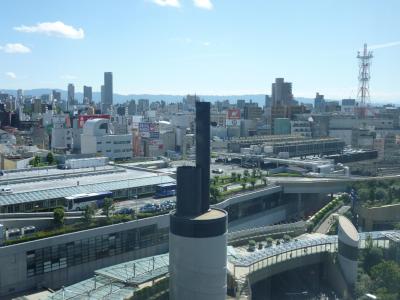
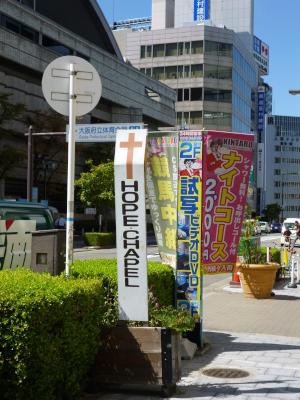
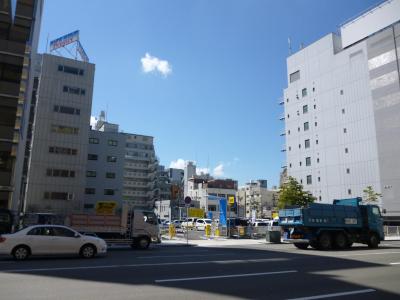

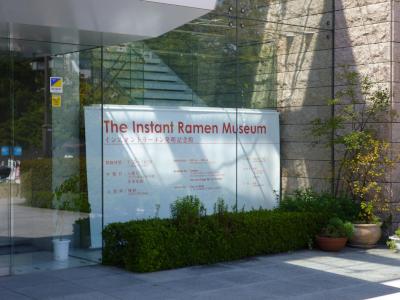
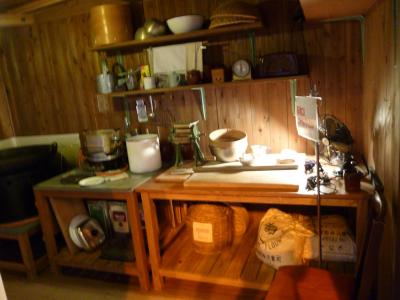

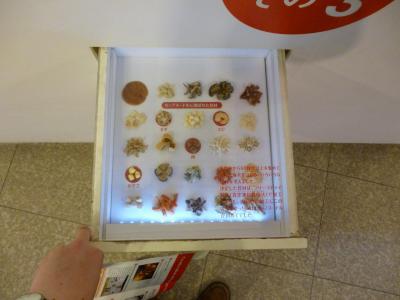
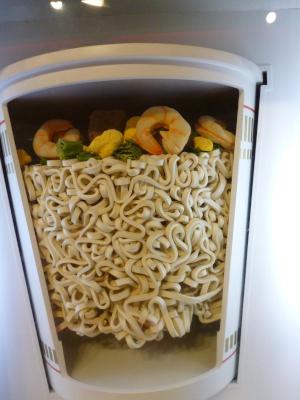
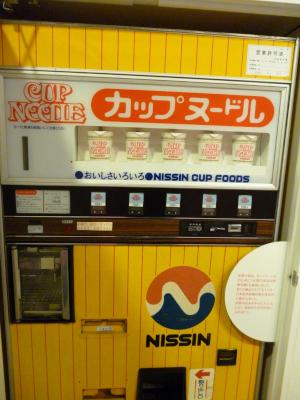
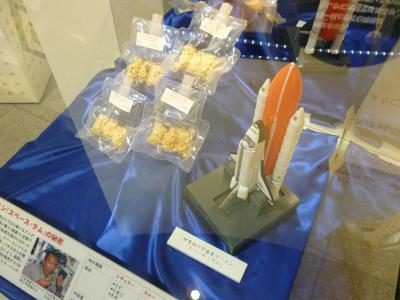

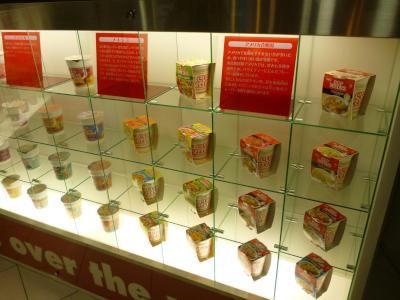
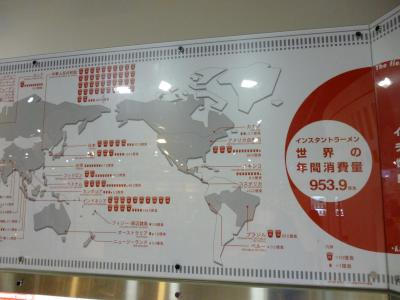
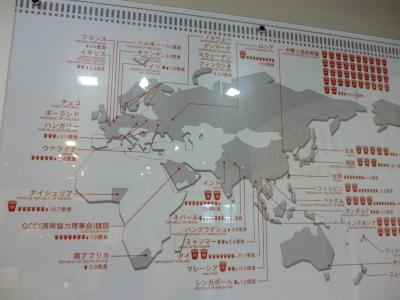

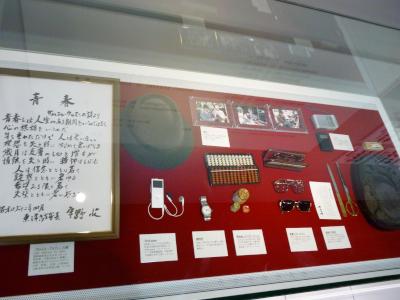

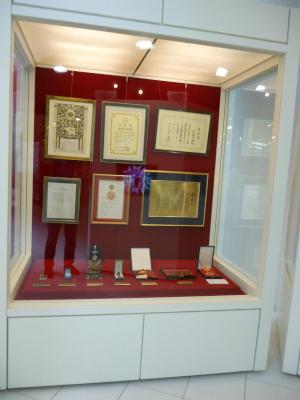
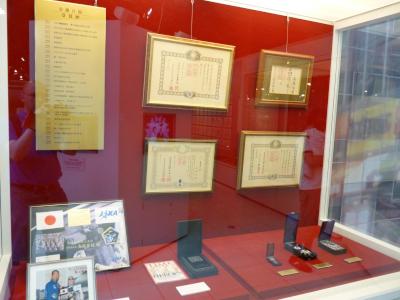
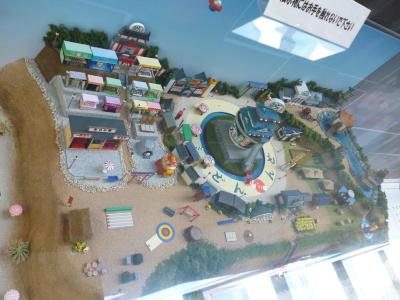

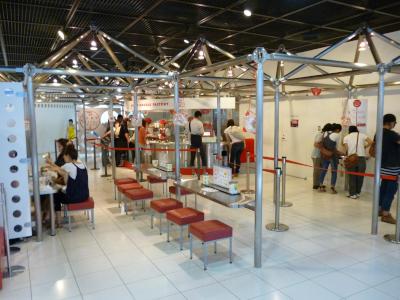

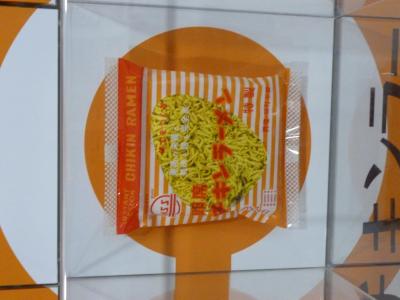
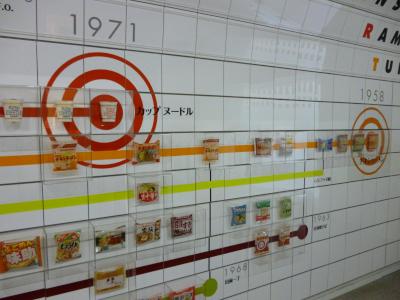

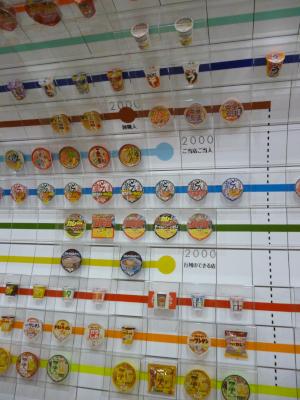
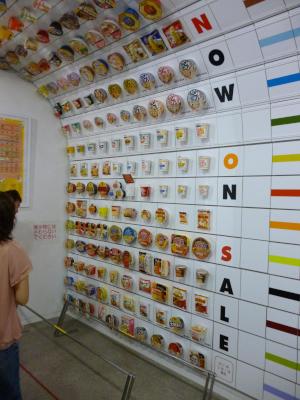
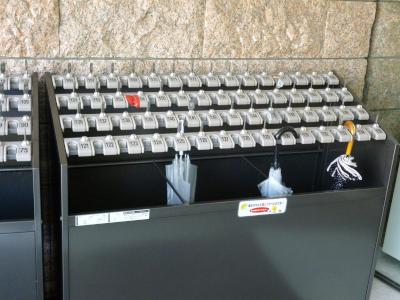
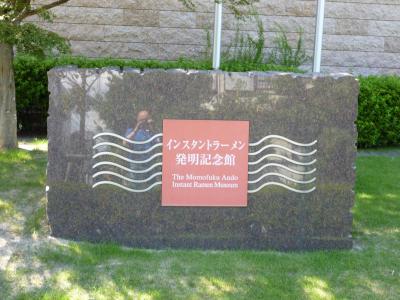

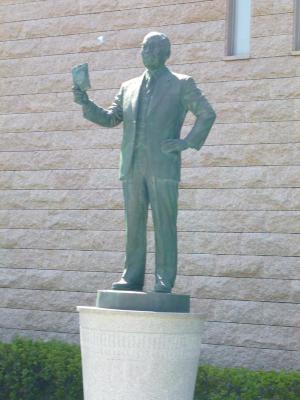


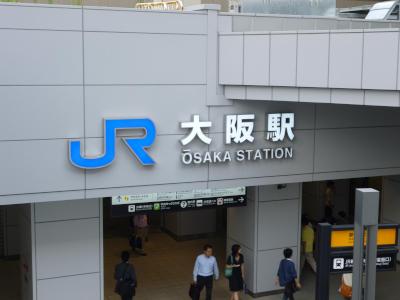
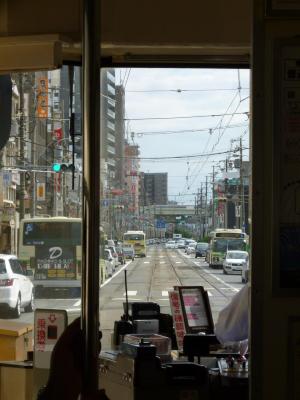
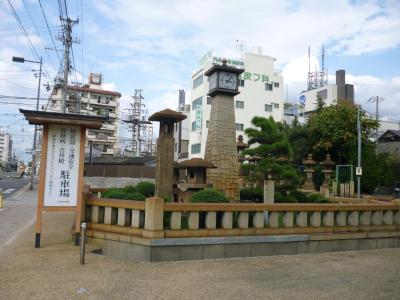

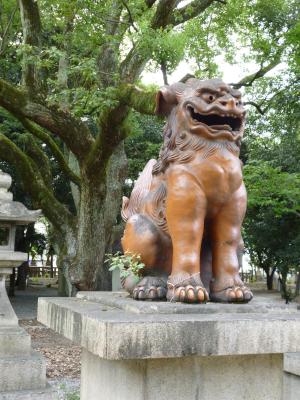
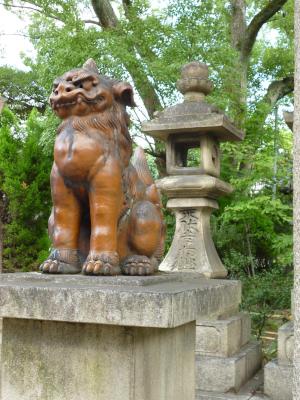
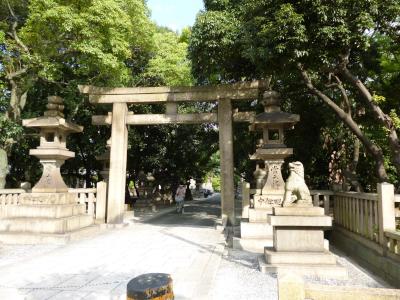



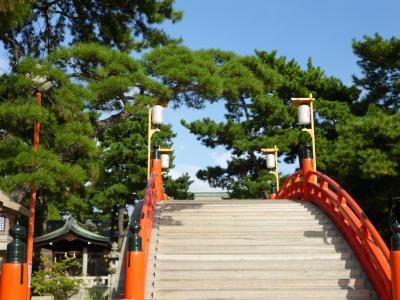
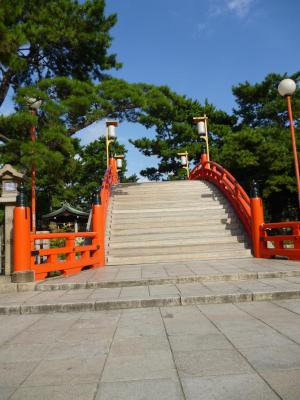
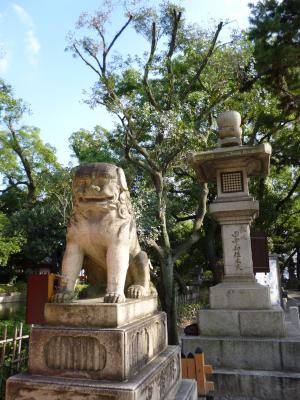
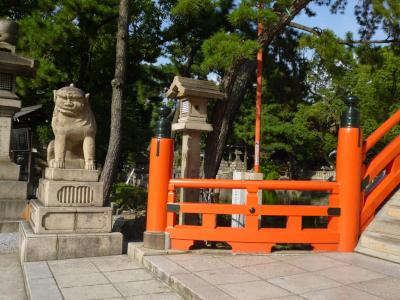


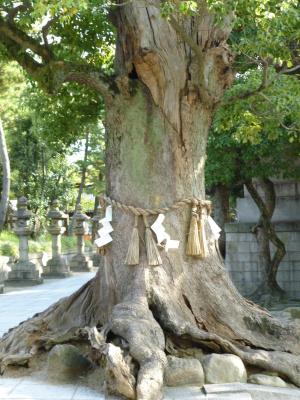
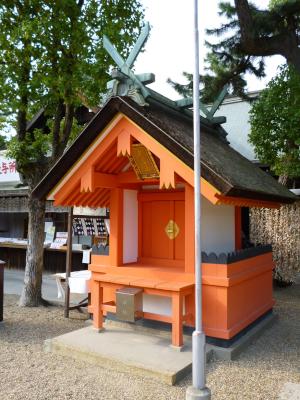
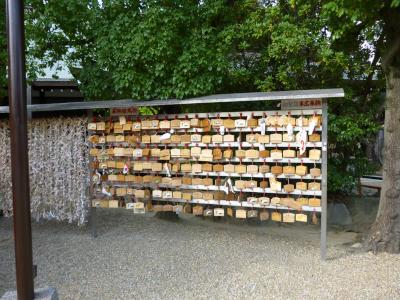
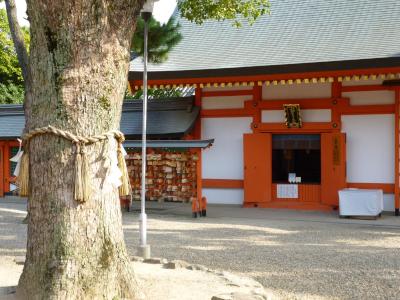

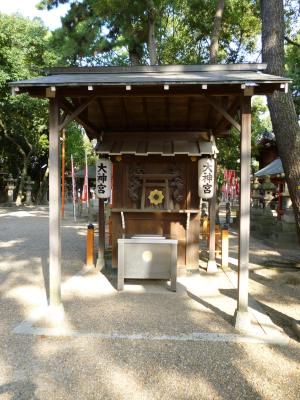


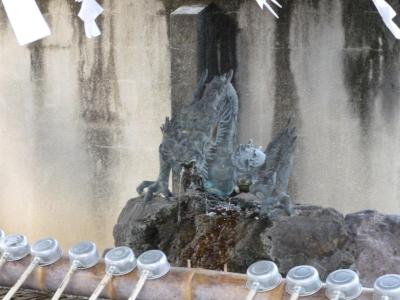

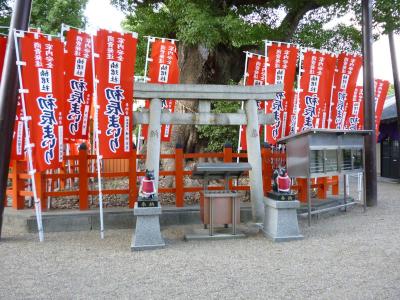
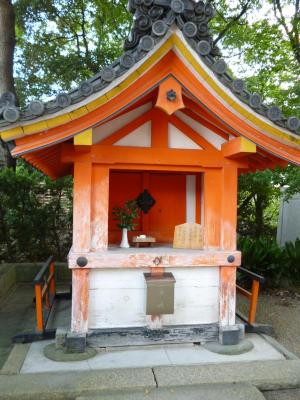


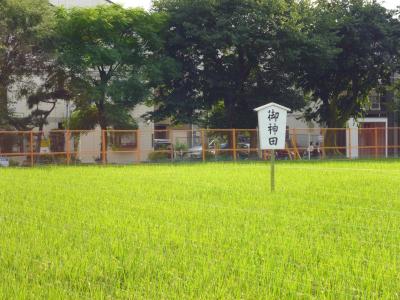

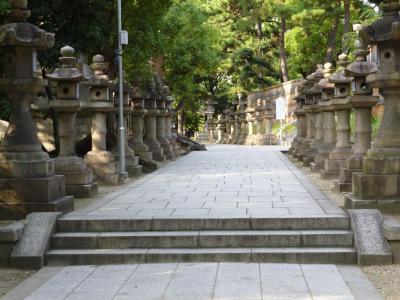
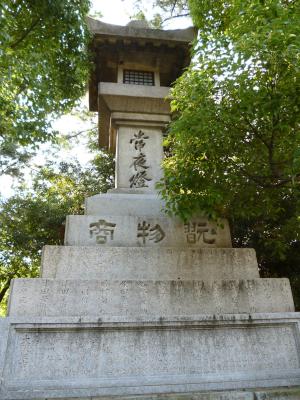
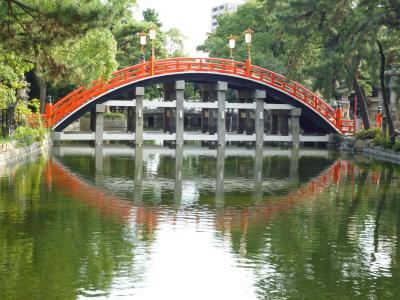
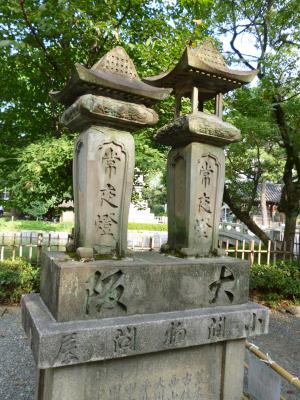

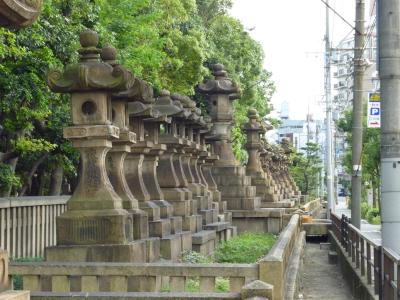
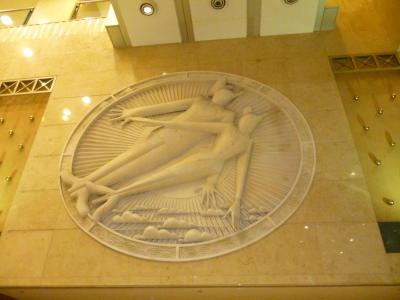
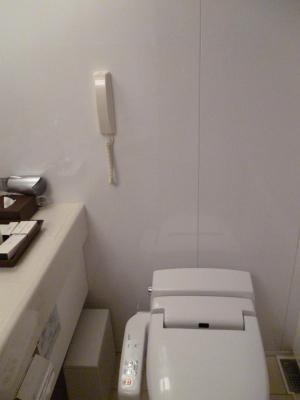
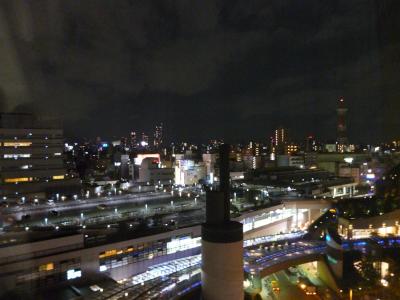
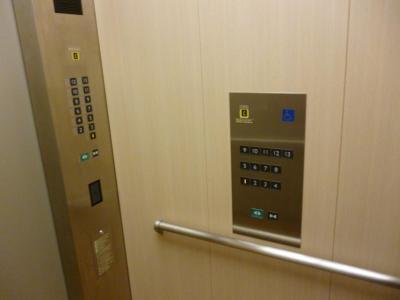
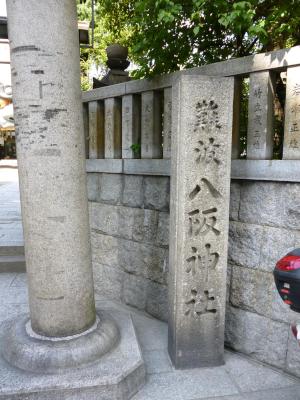
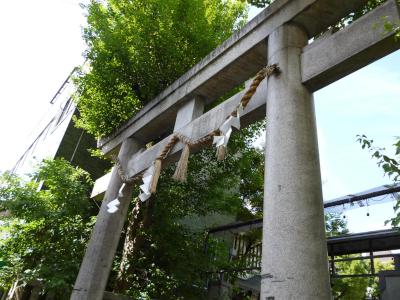

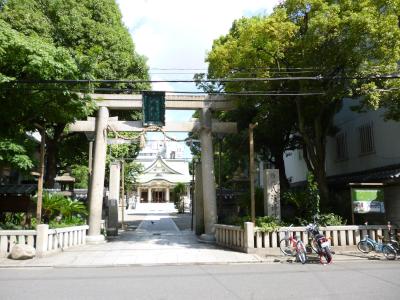






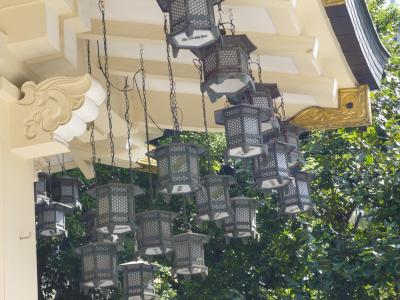

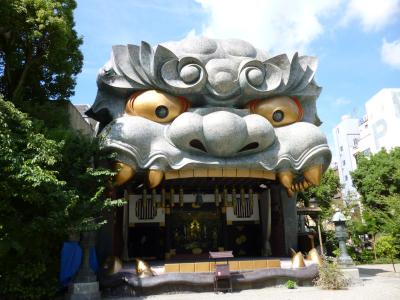
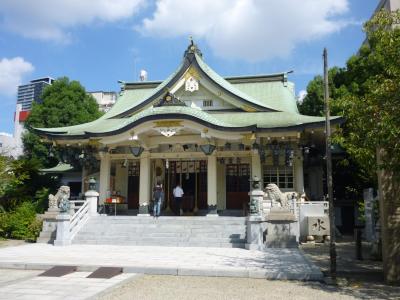
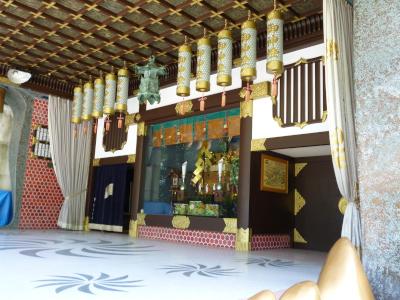

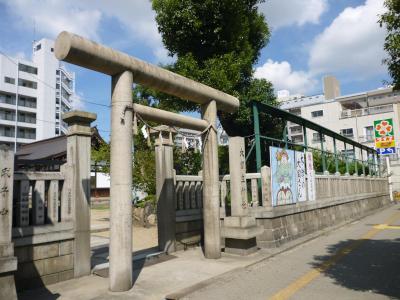


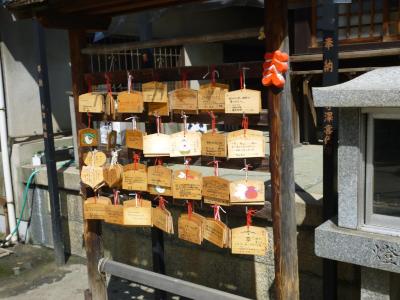

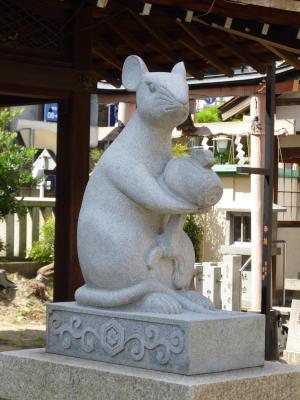
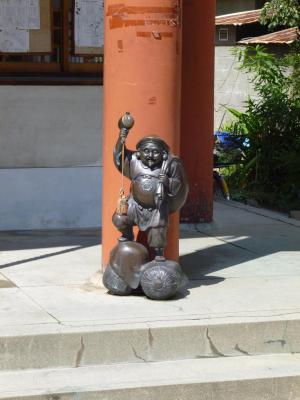
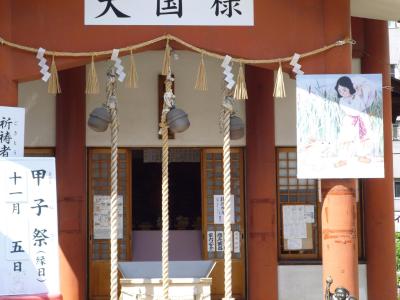


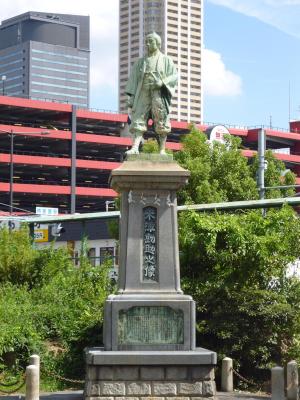

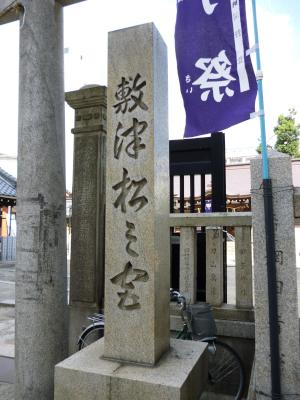
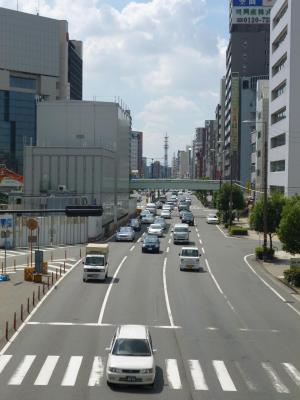
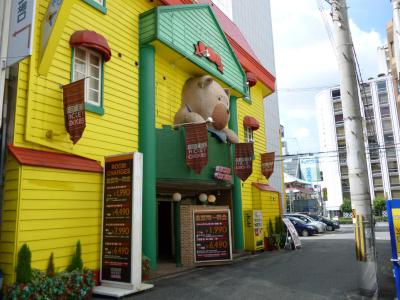

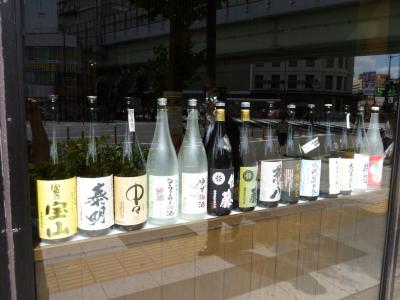

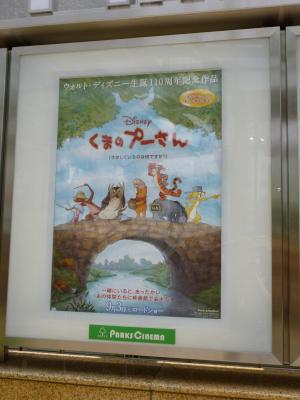
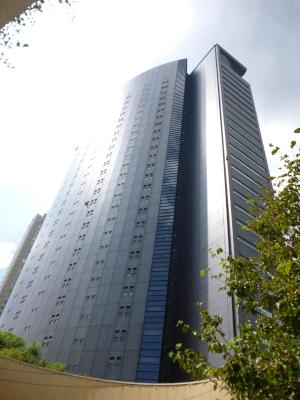




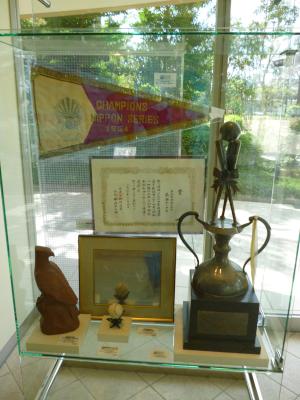
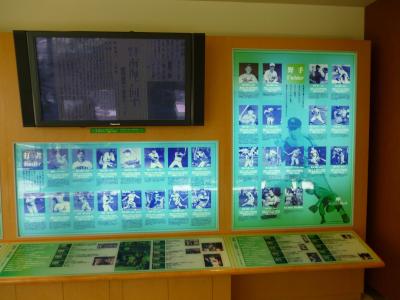
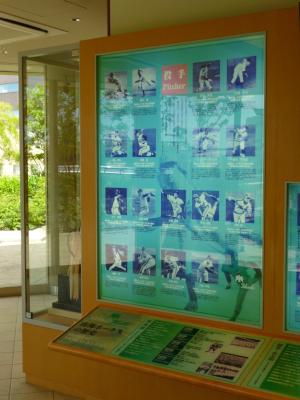
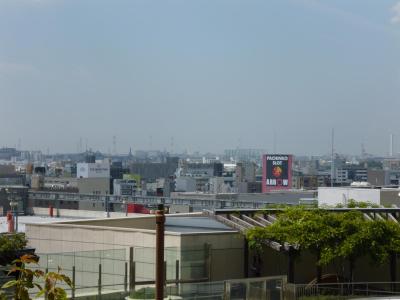

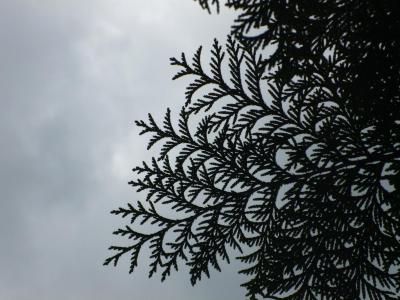
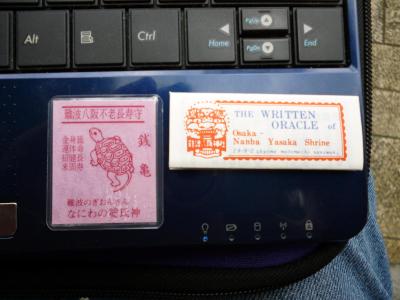

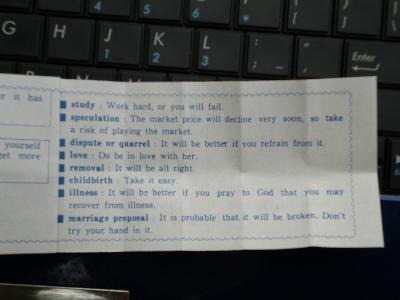



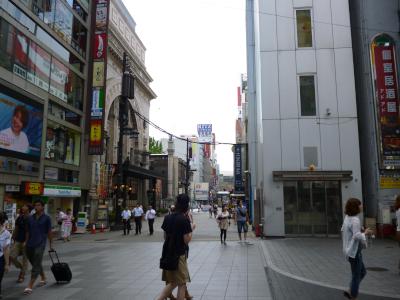
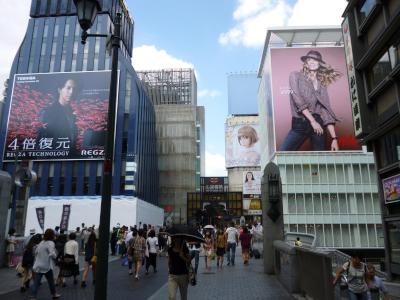
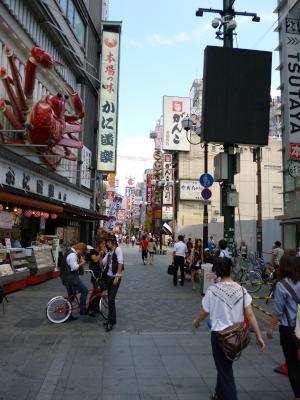
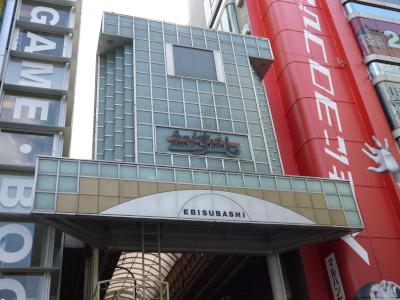

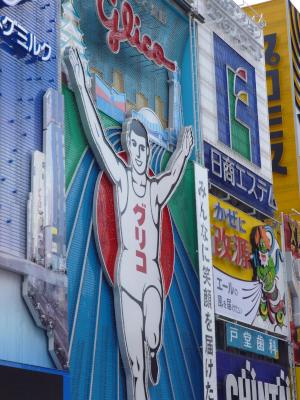
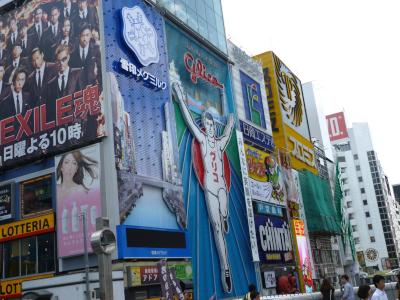
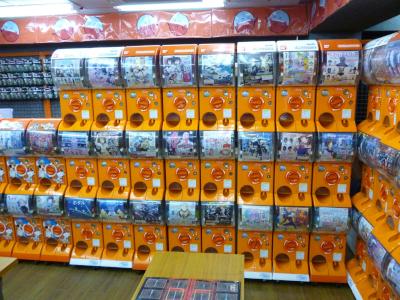
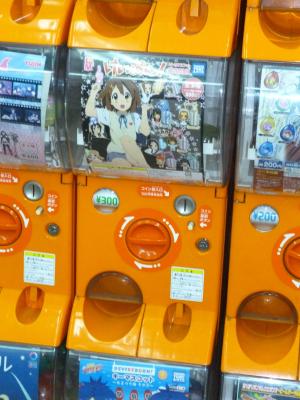
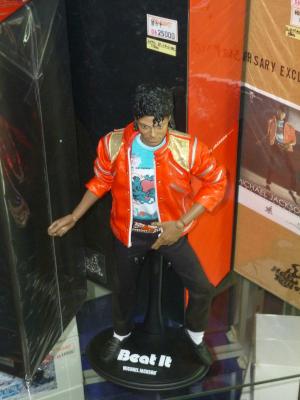

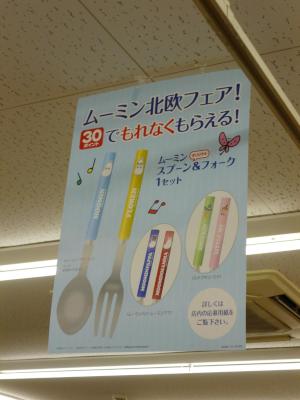
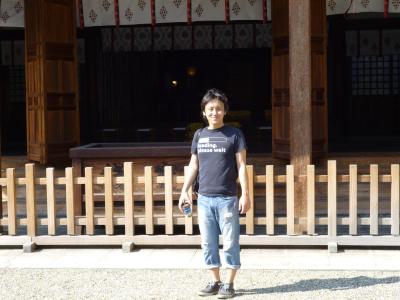

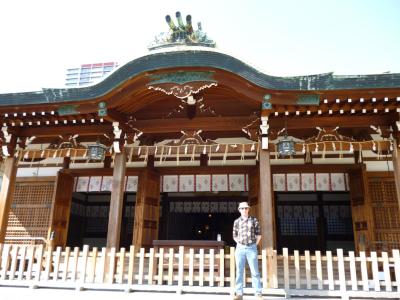
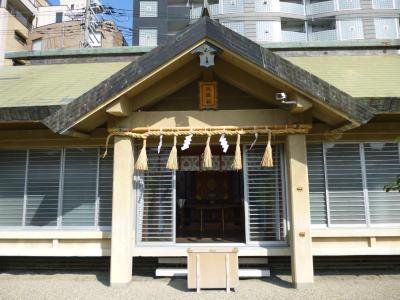

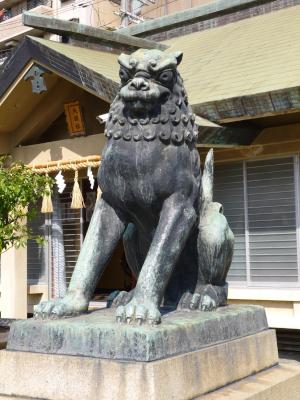



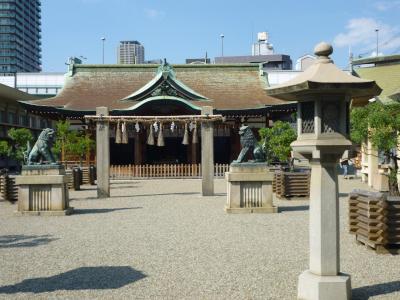
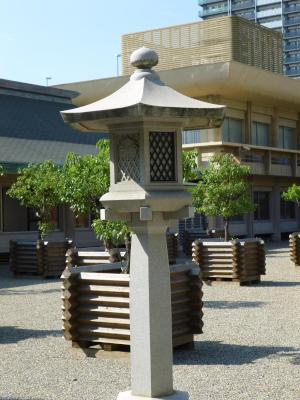


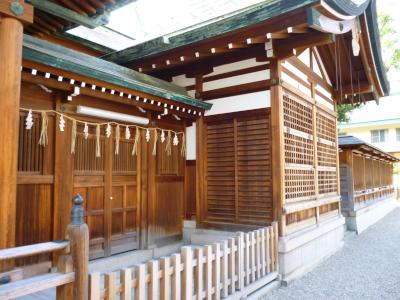
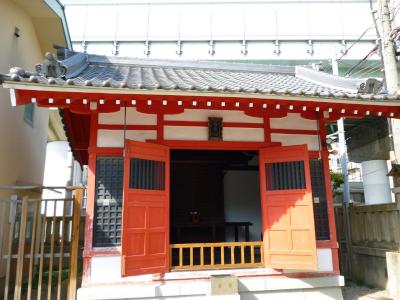
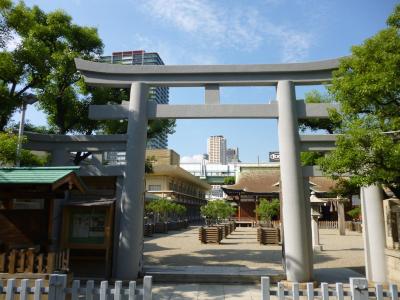

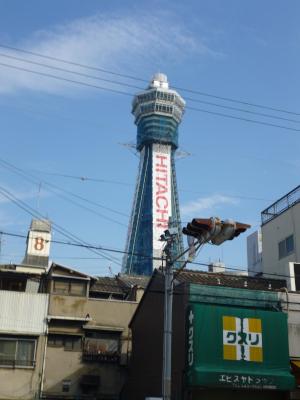
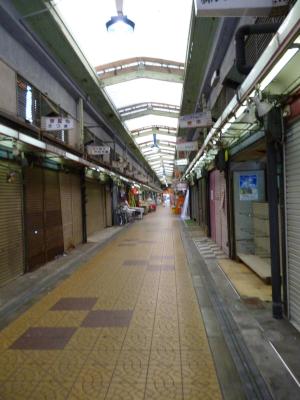
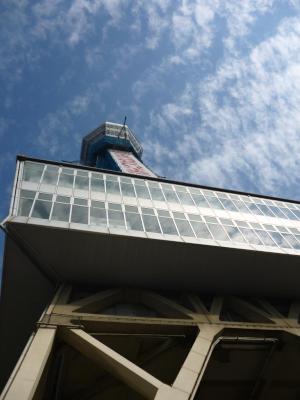
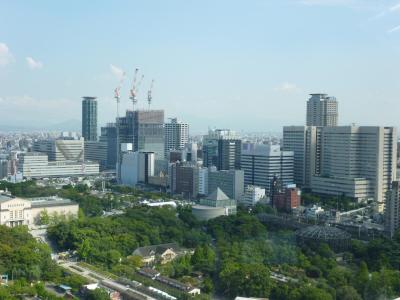
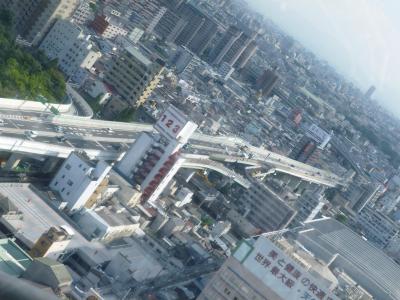
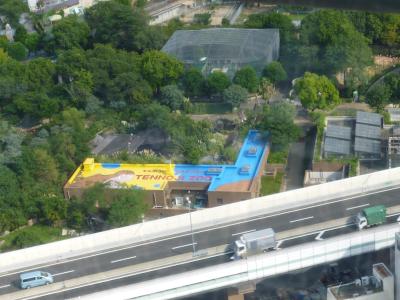
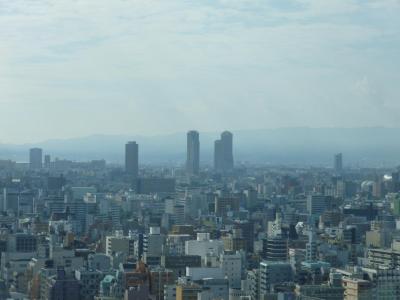
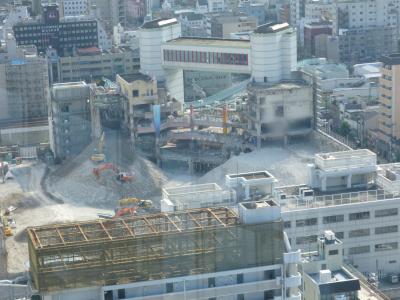
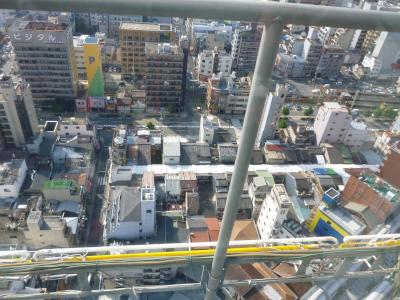
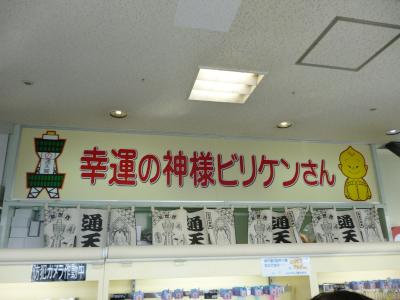
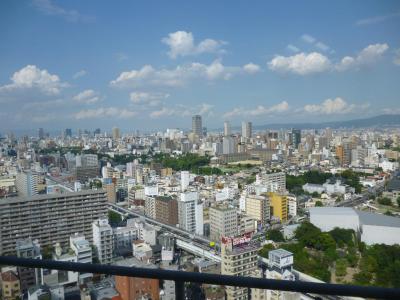

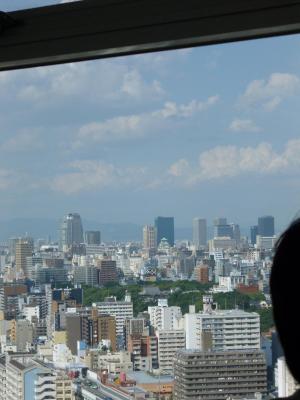
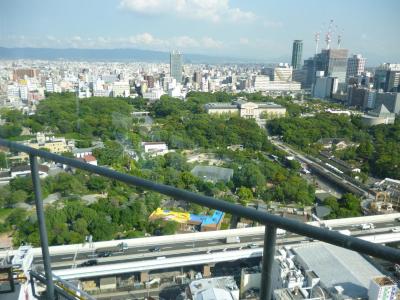

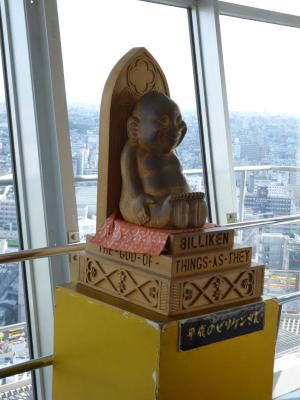
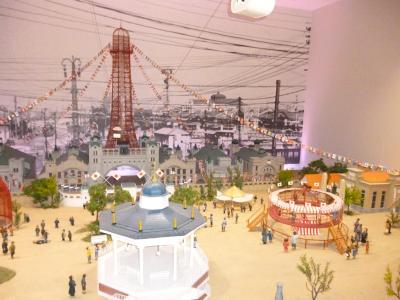
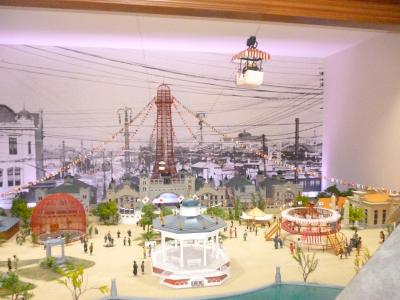
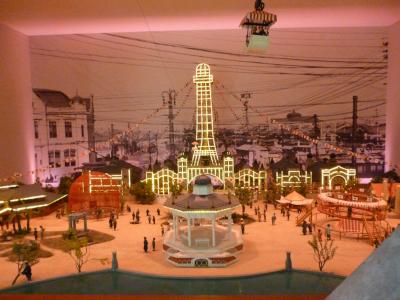
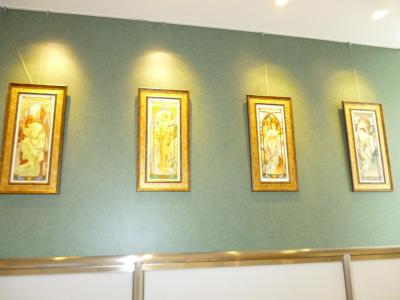
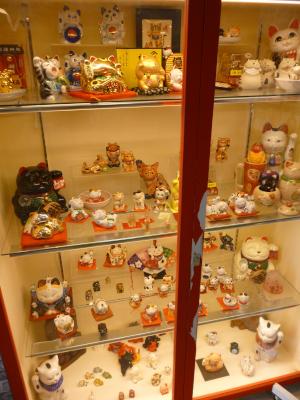
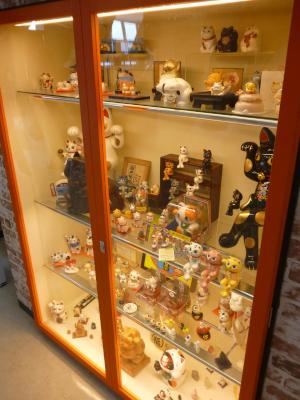


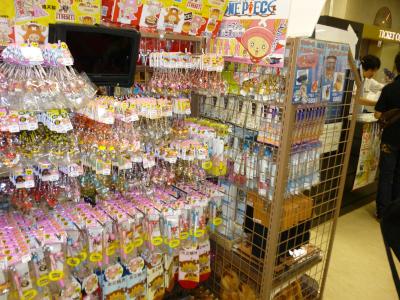
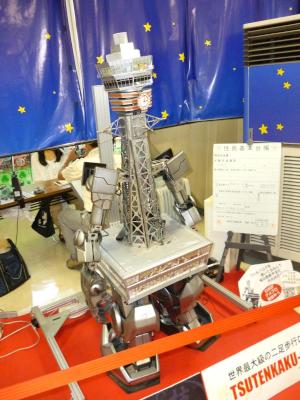
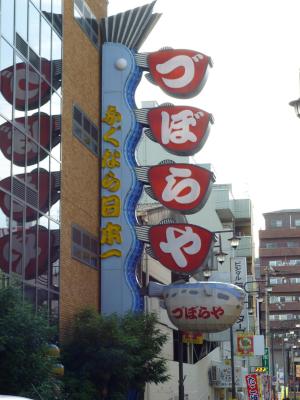




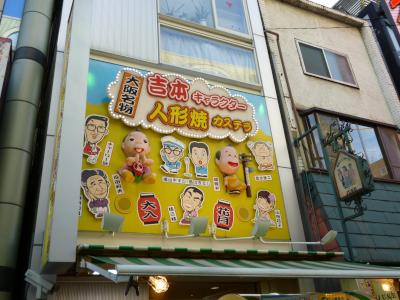
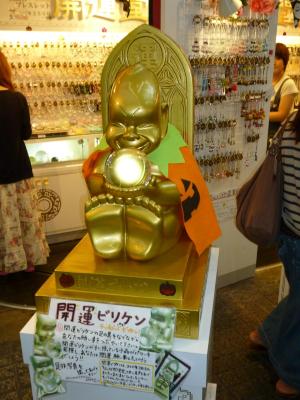
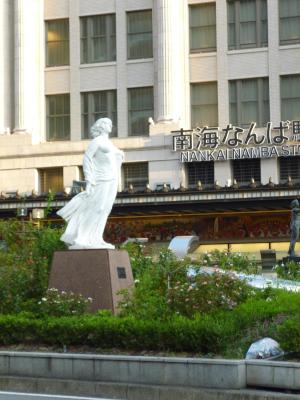
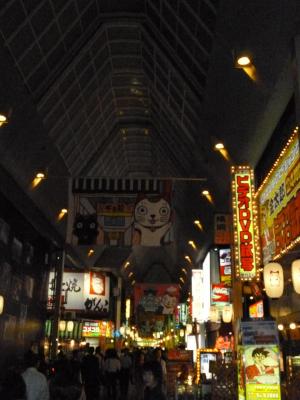
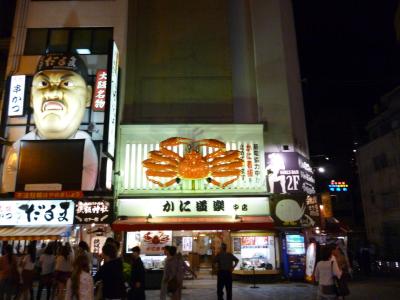

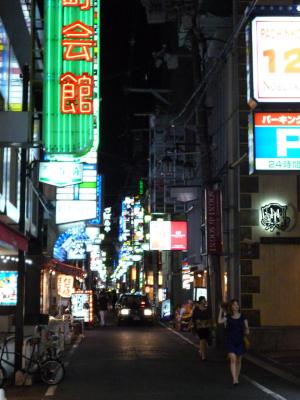
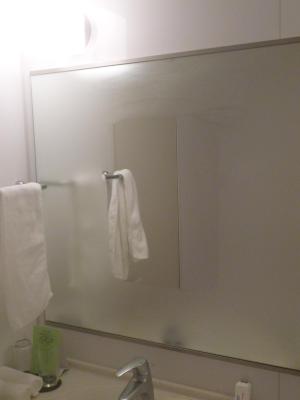
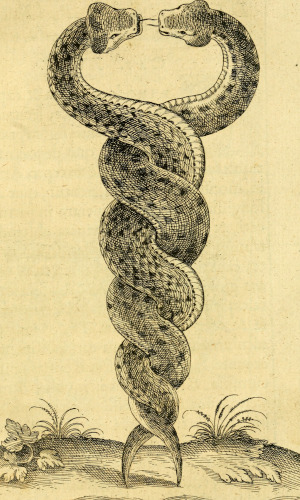
Language issues - sure, there is the sort of empress who is the spouse of a reigning emperor, but don't we all remember that Victoria was Empress of India in her own right? And Albert, had he lived that long, would not have been Emperor: ladies get the honorific title of their spouses, men don't. One of the great pities about English is that it has become almost totally de-gendered. That's good because it is easy for immigrants from all over the world to pick it up with a fair degree of competence in a short time, but there is a corresponding loss of precision and finesse. Anyway, there is never a one-to-one correspondence between a word and a meaning, so why not Empress?
I loved your report of the exchange between Y and EYM. I got this strange feeling when I was in a similar situation in Germany, despite the fact that I had never even pretended to study German: if I don't know all human languages, it's my fault. That's my version of original sin. How about you?
Don't worry about the delay in posting. Adventures trump writing about them.
Axel - 2011-09-14 12:18